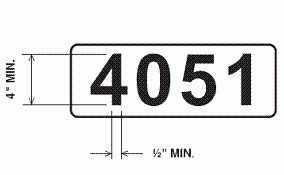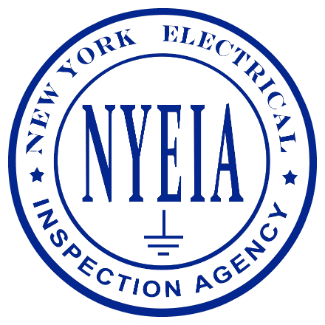Clearly placing address identification on a property during its construction phase is not just a matter of regulatory compliance; it’s also essential for operational efficiency and safety. Proper signage ensures that contractors, building officials, utility contractors, emergency responders, and deliveries can locate properties quickly and accurately. This section outlines both the requirements and the best practices for builders, contractors, and property owners on how to properly display address and lot numbers throughout the construction process.
Before beginning construction, builders and contractors must familiarize themselves with New York State and local municipal laws regarding address numbering. These laws typically specify where and how the numbers must be displayed. For example, the current 2020 Residential Code of New York State mandates that buildings have clear, approved address signs visible from the street. The sign characters must contrast with the background, use Arabic numbers or letters, and cannot have numbers that are spelled out. Each character must be at least 4 inches tall with a minimum stroke width of 0.5 inch. If necessary for emergency response, additional signs may be required. For buildings not visible from public roads, displaying signs on a monument or pole is necessary. Builders must maintain all address signs.

Municipalities enforce the New York State minimum requirements, and many impose compounding fines for not complying with these regulations.
Builders and contractors should consult with the local building department or municipal code for specific requirements, which may include the size, color, and visibility of the numbers.
Address and lot numbers should be placed at a prominent location visible from the street. Common locations include:
- Temporary Signage: Erect a durable, weather-resistant sign at the front of the property. Position the sign at eye level and perpendicular to the road for easy viewing by passing drivers and pedestrians.
- Fences and Barriers: If a fence or barrier surrounds the construction site, use this as a platform for displaying the number, ensuring it faces the nearest public road.
- Entrance of the Driveway: For properties set back from the road, placing the number at the driveway’s entrance can aid visibility.
To ensure legibility, numbers should be large enough to be read from the nearest public street. A minimum height of 4 inches is required, but larger sizes may be necessary depending on the distance from the street. Use contrasting colors (e.g., black on white) to enhance readability against any background.
Construction sites are dynamic environments where signage can easily be knocked over, covered, or damaged. Use materials that can withstand weather conditions and construction activity, such as metal or hard plastic. Regularly inspect the signage and repair or replace it if it becomes obscured or unreadable.
In addition to regulatory compliance, consider the needs of emergency responders and utility services. Clear and visible address numbers can significantly reduce response times in emergencies. Ensure that all contractors and site workers understand the importance of always maintaining clear signage.
Once construction is nearing completion, plan for the installation of permanent address numbers. These should meet all local guidelines for permanent structures and should replace the temporary signage used during construction.
Properly displaying addresses and lot numbers during construction is a small but crucial task that enhances safety and efficiency. By adhering to local regulations and employing best practices for visibility and durability, builders can contribute significantly to smooth operations and quick response times in any construction project. Always prioritize clear communication and maintenance of these signs to assist everyone involved, from contractors to emergency responders, in finding the correct property without delay.
Source: 2020 Residential Code of New York State
Author: Fritz Gunther is the President and Chief Electrical Inspector of the New York Electrical Inspection Agency with over 30 years of experience. He is a Principal voting member of NFPA70 NEC Code-Making Panel 1 and teaches statewide. He is also a certified electrical inspector with the ICC/IAEI, a New York State Certified Code Official, and a Licensed New York State Home Inspector.
